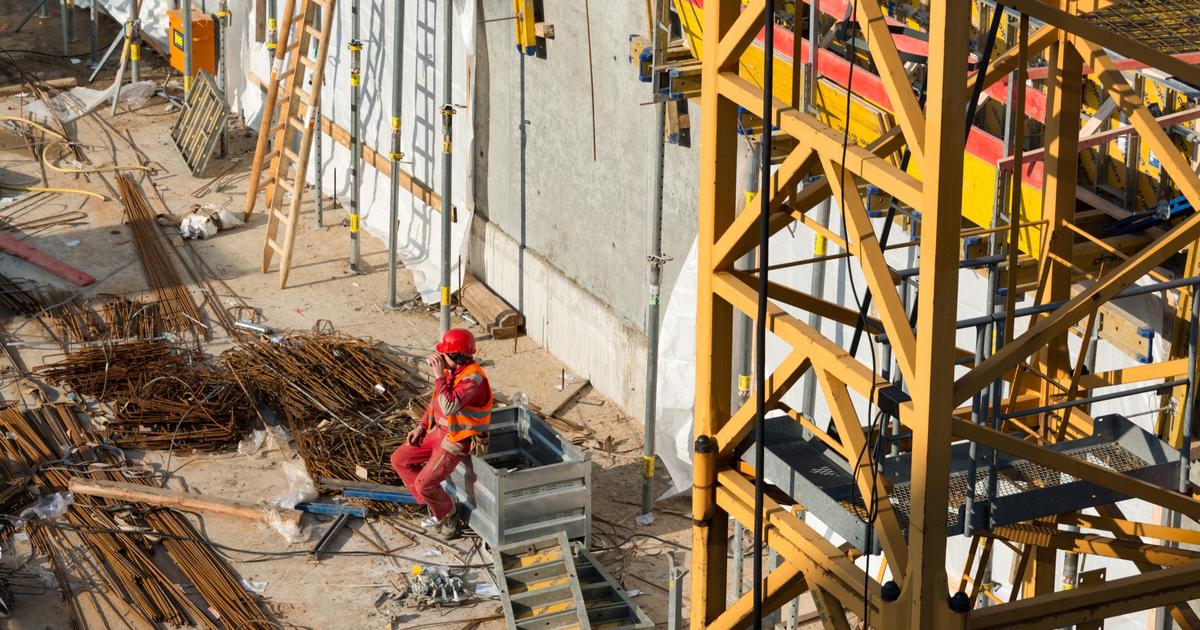This is how the Chernobyl nuclear plant was after Russian withdrawal 4:12
(CNN Spanish) --
An explosion in the middle of the night, a leak of radioactive elements into the atmosphere, a chaotic response from the authorities that included the evacuation of an entire city, and finally a tragedy marked the events at the Chernobyl plant in 1986, one of the worst nuclear accidents in history.
The crash that occurred in the Soviet Union 36 years ago continues to spark fear and fascination around the world – a series about the event produced by HBO became a hit in 2019 – and the Russian invasion of Ukraine – which brought the fighting to around the now-contained No. 4 reactor – have brought it back to the forefront.
Ukrainians shocked by 'absurd' Chernobyl scenario after Russian pullout revealed radioactive contamination
But although Chernobyl, where more than 30 people died as a result of the accident and thousands more were affected, is the most terrible nuclear accident in history, it is not the only one.
A scale to measure the worst nuclear accidents
The International Atomic Energy Agency (IAEA), belonging to the UN, has a scale to measure nuclear accidents, and keeps a record of all those that have occurred on the planet.
This International Nuclear and Radiological Event Scale (INES) takes into consideration, among many variables, the consequences on people and the environment, but also its effects on radiological barriers and control systems that may have failed.
And it measures severity in 7 levels, with level 7 being reserved for a "major accident".
advertising
This is a list of the five worst nuclear accidents in history –in ascending order– according to the INES scale:
5 - Windscale Piles, UK (1957)
The most serious accident in the United Kingdom led to a "release of radioactive material into the environment following a fire in the core of a reactor core", according to the IAEA, and is classified as level 5, that is, an "accident with serious consequences". more far-reaching".
Switching fuel for a reactor at Windscale Nuclear Power Station, UK.
(Credit: George Freston/Getty Images)
It took place in October 1957, when a fire – started during a procedure to release excess energy in the reactor – engulfed the first British reactor at Windscale (the Windscale Pile No.1), in the northwest of England, creating a leak of radioactive material – including iodine, cesium, polonium and plutonium, according to a report – that reached the entire country and northern Europe
Firefighters took three days to put out the fire, working in shifts to avoid radiation exposure.
As a result of the accident, it is estimated that between 200 and 240 people died of cancer.
4 - Three Mile Island, United States (1979)
Also level 5, this accident, the largest in the United States, led to "serious damage to the reactor core."
The Three Mile Island Nuclear Power Plant in the early morning hours of March 28, 2011 in Middletown, Pennsylvania.
(Photo Jeff Fusco/Getty Images)
The accident occurred in March 1979, when the second reactor at the Three Mile Island plant in Middletown, Pennsylvania, partially melted due to a cooling system failure, releasing radioactivity into the atmosphere, rendering it permanently unusable.
No deaths or injuries were reported among workers at the plant or in nearby communities, but the incident shook the US nuclear industry and led to a series of reforms in plant safety and monitoring.
The Three Mile Island plant finally closed in 2019.
3 - Kyshtym, USSR (1957)
Long before Chernobyl, the Soviet Union suffered a level 6 incident – a "major accident" – in this Russian city, where there was a "significant release of radioactive material into the environment from the explosion of a high-level waste tank." ".
A demonstration in 2007 calls for the inhabitants of the Chelyabinsk region to be relocated out of an area contaminated by the Kyshtym accident.
(Credit: Alexey SAZONOV/AFP via Getty Images)
Also occurring in 1957, like the Windscale accident in the United Kingdom, this disaster was due to a failure in the refrigeration system in a tank containing radioactive waste at the Mayak plutonium production plant in Russia.
The increase in temperature resulting from the failure led to an explosion that spread radioactive elements into the atmosphere, including cerium and zirconium.
As a result, more than 12,000 people were evacuated from the contaminated area around Kyshtym, a city 1,400 kilometers east of Moscow, according to the Russian atomic agency Rosatom.
Initially little was known about the accident in Kyhstym, and only after the fall of the USSR did the international community obtain details that led the IAEA to classify it as a level 6 disaster, according to the Encyclopedia Britannica.
2- Fukushima, Japan (2011)
The nuclear accident that occurred in Fukushima is the only one, apart from Chernobyl, to have reached the highest level on the INES scale.
Specialists protected with suits and masks checking radiation levels during clean-up work in Fukushima, in November 2011. (Credit: DAVID GUTTENFELDER/AFP/Getty Images/File).
On March 11, 2011, a strong earthquake of magnitude 9.1, 372 km northwest of Tokyo, caused a tsunami with waves of 9 meters that damaged several nuclear reactors at the Fukushima Daiichi plant.
At the Fukushima plant, radiation levels of 1,000 microsieverts were recorded, the same amount that normal people receive in a year.
No deaths were recorded as a direct consequence of the Fukushima nuclear accident.
Although during the post-earthquake tsunami it is estimated that some 22,000 people died.
1- Chernobyl, USSR (1986)
The explosion of reactor No. 4 at Chernobyl (now in Ukraine), a level 7 event – like Fukushima – caused "widespread health and environmental effects" and an "external release of a significant fraction of the reactor core ".
A reactor at the Chernobyl power plant exploded on April 26, 1986, releasing large amounts of radiation into the atmosphere.
(Credit: Volodymyr Repik/AP)
It happened on April 26, 1986, in the middle of a failed safety test, and clouds of radioactive material spread across Europe.
More than 30 people died immediately after the explosion from radiation exposure, and in the years that followed, many more died from radiation symptoms, according to the IAEA and the World Health Organization, the body that puts the figure. final death toll at about 4,000.
In the months after the accident, a sarcophagus was built to cover the No. 4 reactor and contain the radioactive material.
However, it has since deteriorated, leading to radiation leaks, and as a result in 2016 a structure known as the New Secure Confinement was placed over the sarcophagus.
ChernobylNuclear Disaster










/cloudfront-eu-central-1.images.arcpublishing.com/prisa/2C5HI6YHNFHDLJSBNWHOIAS2AE.jpeg)




